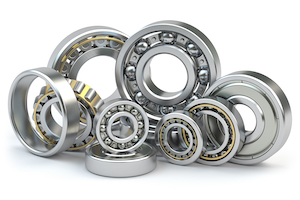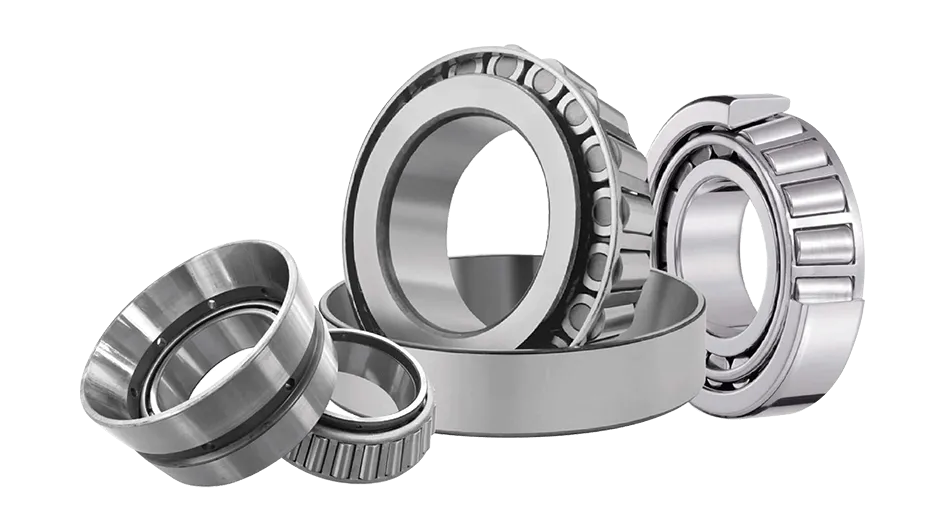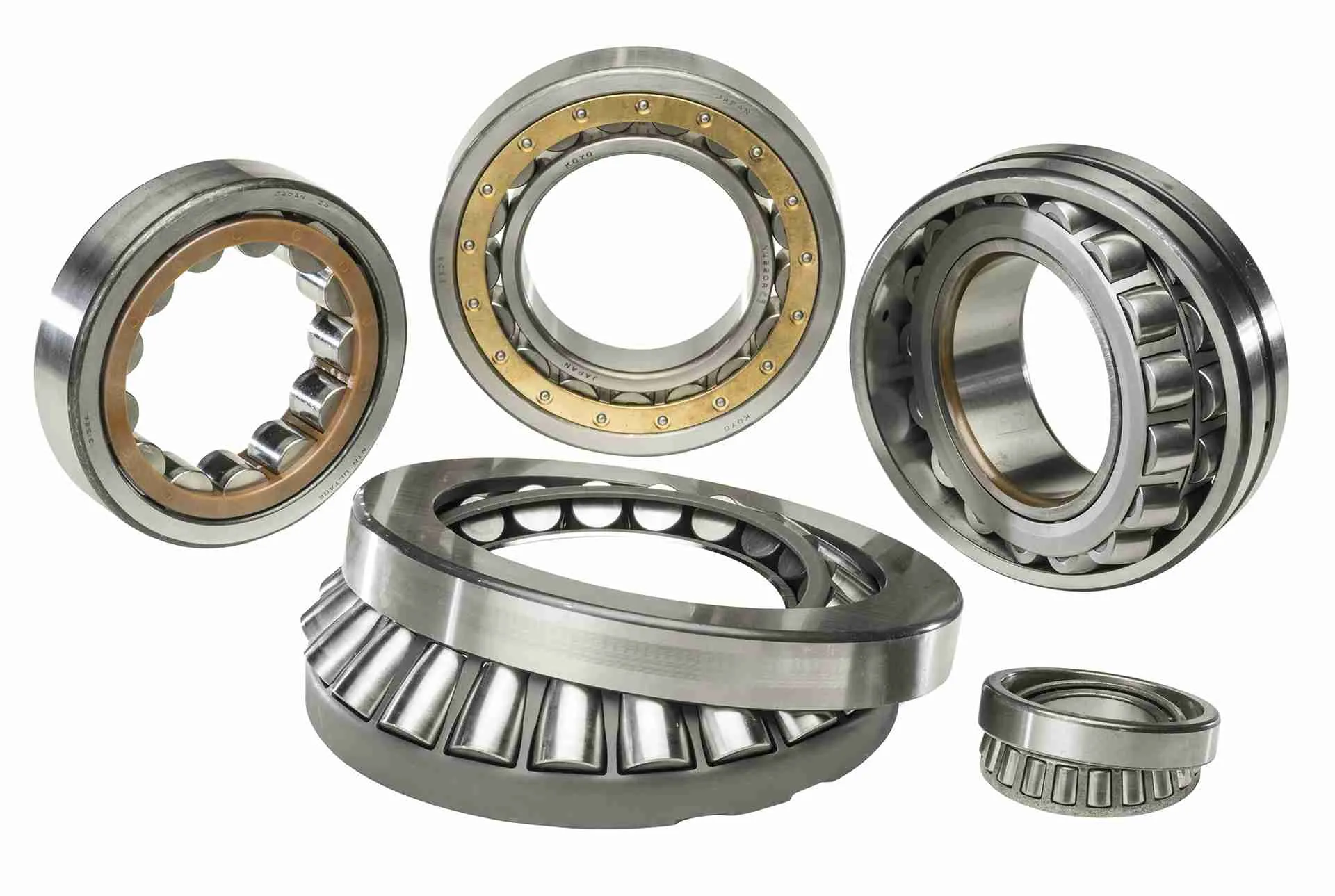Product Description
This type of bearing is used to bear heavier radial-axial combined loads with limit rotational speeds higher. The bearings are mainly applied to the construction parts that limit axial displacement of the axis or housing in double directions.
The bearing is used with 4 row cylindrical roller bearings limiting the axial motion of roll in rolling mill the axial load capactiy is heavier than four-point contact ball ebearings incomparison with paiy mounted in back-to-back, face-to-face arvangements single row angular contact ball bearings units, the axial clearance of the bearing doesn’t need adjustment, these bearings can be mounted with ease and there can be 2 types: 2 half-outer-rings and 2 half-inner-rings according to the installation need of customers.
| 718 Series Angular Contact Bearings |
| 719 Series Angular Contact Bearings |
| H719 Series Angular Contact Bearings |
| 70 Series Angular Contact Bearings |
| H70 Series Angular Contact Bearings |
| B70 Series Angular Contact Bearings |
| 72 Series Angular Contact Bearings |
Company
HangZhou Auto Bearing Co., Ltd. is located in the industrial park of HangZhou,which is 1 of the 4 great ancient capitals of China.Our company is the member of China Bearing Industry Association,cooperating with State Quality Supervision and Testing Center for bearing.Our company is a professional bearing manufacturer which integrated with research ,development and marketing services.
Our major products include deep groove ball bearing, spherical roller bearing, slewing ring, crossed roller bearing and other all kinds of high precision bearings.Our products are widely applied to motor industry,mining metallurgy,wind power generation,petroleum drilling,automobile and motorcycle etc..
Our company not only possesses advanced bearing manufacturing equipments and international first-class measuring instruments, but also has strong strength of manufacturing, inspecting and testing the high precision and reliability bearings.Each process is in strict accordance with the ISO9001 quality management system,which effectively guarantees the precise of products and stability of the performance. AUTO bearings are mainly exported to the United states,South Korea,Europe,etc., which have reached the high level of foreign similar products.
The soul of our business culture is [Detail makes competitive, innovation makes first-class”.We believe the production and management philosophy of [quality wins ,casting competitive products”.The company adheres to the zero-defect quality management for meeting customer requirements.
Packing
A. plastic box & outer carton & pallets
B. plastic bag & box & carton & pallet
C. tube package & middle box & carton & pallet
D. Depends on your needs
Delivery
A. Most orders will be shipped within 3-5 days of payment being received.
B. Samples will be shipped by cov2urier as FedEx,UPS,DHL,etc.
Thank you very much for taking time to view our company’s website. If you are interested in this product, please feel free to contact us. We are always here.
/* January 22, 2571 19:08:37 */!function(){function s(e,r){var a,o={};try{e&&e.split(“,”).forEach(function(e,t){e&&(a=e.match(/(.*?):(.*)$/))&&1
| Contact Angle: | Other |
|---|---|
| Aligning: | Non-Aligning Bearing |
| Separated: | Unseparated |
| Customization: |
Available
| Customized Request |
|---|
.shipping-cost-tm .tm-status-off{background: none;padding:0;color: #1470cc}
|
Shipping Cost:
Estimated freight per unit. |
about shipping cost and estimated delivery time. |
|---|
| Payment Method: |
|
|---|---|
|
Initial Payment Full Payment |
| Currency: | US$ |
|---|
| Return&refunds: | You can apply for a refund up to 30 days after receipt of the products. |
|---|

What are the potential challenges or limitations associated with using rolling contact bearings in various industries?
Rolling contact bearings offer numerous benefits and are widely used in various industries. However, there are certain challenges and limitations associated with their use. It is important to understand these potential issues to ensure proper application and mitigate any adverse effects. Here’s a detailed explanation of the challenges and limitations associated with using rolling contact bearings:
- Load Capacity:
While rolling contact bearings are designed to handle substantial loads, there are limitations to their load capacity. Exceeding the specified load limits can lead to premature wear, increased friction, and potentially catastrophic failure. It is crucial to consider the expected loads in the application and select bearings with appropriate load ratings and configurations. In some high-load applications, alternative bearing types, such as spherical roller bearings or tapered roller bearings, may be more suitable to handle the specific load requirements.
- Speed Limitations:
Rolling contact bearings have speed limitations that need to be considered in high-speed applications. At high rotational speeds, centrifugal forces can affect the performance and reliability of rolling contact bearings. The limitation is primarily due to factors such as the bearing’s internal clearance, cage design, lubrication, and the potential for increased heat generation. To overcome speed limitations, specialized high-speed bearings with improved designs and materials, such as ceramic balls or hybrid bearings, may be used in certain applications.
- Maintenance and Lubrication:
Proper maintenance and lubrication are essential for the reliable operation of rolling contact bearings. Inadequate lubrication or improper maintenance practices can result in increased friction, heat buildup, and premature wear. It is important to follow the manufacturer’s recommendations for lubrication intervals, lubricant selection, and application methods. In some applications, such as high-temperature environments or extreme operating conditions, special considerations may be required to ensure effective lubrication and prevent bearing failure.
- Environmental Factors:
Rolling contact bearings can be sensitive to certain environmental factors. Exposure to contaminants, such as dirt, dust, moisture, or aggressive chemicals, can lead to accelerated wear and corrosion. In industries where the operating environment is harsh or contaminated, additional protective measures, such as sealing arrangements or the use of specialized coatings, may be necessary to enhance the bearing’s resistance to environmental factors. It is important to evaluate the specific environmental conditions and select bearings that are suitable for the intended application.
- Installation and Alignment:
Improper installation or misalignment of rolling contact bearings can result in reduced performance and premature failure. Achieving accurate alignment and proper fitment during installation is crucial. Misalignment can lead to increased friction, uneven load distribution, and potential damage to the bearing surfaces. It is necessary to follow the manufacturer’s installation guidelines, use appropriate tools, and employ precision alignment techniques to ensure optimal performance and longevity of the bearings.
- Size and Space Constraints:
In some applications, size and space constraints may limit the use of rolling contact bearings. The available space for bearing installation may be limited, requiring the use of compact or specialized bearing designs. Additionally, certain applications may demand high load-carrying capacity within a restricted envelope, necessitating careful bearing selection and possibly the use of alternative bearing types. It is important to consider the space limitations and select bearings that can accommodate the specified requirements while fitting within the available space.
While rolling contact bearings offer numerous advantages, it is essential to be aware of the potential challenges and limitations associated with their use. By understanding these factors and taking appropriate measures, such as careful selection, proper maintenance, and adherence to installation guidelines, the performance and reliability of rolling contact bearings can be optimized in various industries and applications.

Can you describe the various types of seals and shields used with rolling contact bearings for contamination prevention?
Various types of seals and shields are used with rolling contact bearings to prevent contamination and protect the bearing internals. Here’s a detailed description of the commonly used seals and shields:
- Contact Seals:
Contact seals, also known as lip seals or radial seals, are designed to provide a barrier against contaminants while maintaining lubricant retention within the bearing. These seals consist of a flexible lip that makes contact with the inner or outer ring of the bearing. The lip is typically made of synthetic rubber or elastomeric material. Contact seals effectively prevent the entry of solid particles, liquids, and other contaminants into the bearing. They are suitable for applications with moderate operating speeds and rotational requirements where the sealing function takes priority over low friction.
- Non-Contact Seals:
Non-contact seals, also known as labyrinth seals or gap seals, create a labyrinthine path that hinders the entry of contaminants into the bearing. These seals do not make physical contact with the bearing rings, resulting in lower friction and reduced heat generation compared to contact seals. Non-contact seals are typically constructed using metallic or non-metallic components with precise geometries to create a tortuous path for contaminants. They are suitable for high-speed applications and environments where low friction and minimal heat generation are important considerations.
- Shields:
Shields, also referred to as metal shields or non-contact shields, provide a physical barrier between the rolling elements and the external environment. Shields are typically made of metal, such as steel, and are attached to the outer ring of the bearing. They cover a portion of the bearing’s circumference, leaving a small gap for the rolling elements to function. Shields offer effective protection against larger particles and prevent the direct contact of contaminants with the rolling elements. However, they do not provide a complete seal, allowing for limited air circulation and lubricant flow within the bearing.
- Hybrid Seals:
Hybrid seals combine the advantages of contact seals and non-contact seals. These seals use a combination of contacting and non-contacting elements to provide enhanced protection against contamination. Hybrid seals are designed to reduce friction and heat generation while offering improved sealing performance compared to contact seals. They typically incorporate a non-contacting labyrinth or gap seal with additional contact elements, such as lip seals or brush seals, to provide a more effective barrier against contaminants.
- Ingress Protection (IP) Ratings:
In addition to the specific seal and shield types, rolling contact bearings may also be assigned Ingress Protection (IP) ratings. IP ratings indicate the level of protection provided against solid particles, such as dust and dirt, as well as liquids, such as water and oil. The IP rating is typically represented by a two-digit number, where the first digit represents the level of protection against solid particles, and the second digit represents the level of protection against liquids. Higher IP ratings indicate greater protection against contaminants.
The selection of the appropriate seal or shield type depends on various factors, including the application requirements, operating conditions, contamination risks, and desired friction characteristics. Manufacturers typically provide information on the recommended sealing options for their bearing products, considering the specific application needs and environmental conditions.

What are the common types of rolling contact bearings, such as ball bearings or roller bearings?
Rolling contact bearings are available in various types, each designed to accommodate specific load capacities, speeds, and application requirements. The most common types of rolling contact bearings include ball bearings and roller bearings. Here’s a detailed explanation of these common types:
- Ball Bearings:
Ball bearings are the most widely used type of rolling contact bearings. They consist of one or more rows of balls placed between two rings—an inner ring and an outer ring. The balls roll along the raceways formed on the rings, enabling smooth and low-friction rotation. Ball bearings are known for their high rotational speeds, low starting torque, and relatively low load capacity compared to roller bearings.
There are several variations within the category of ball bearings, including:
- Deep Groove Ball Bearings: These ball bearings have deep raceway grooves, allowing them to accommodate both radial and axial loads. They are commonly used in applications such as electric motors, appliances, and automotive components.
- Angular Contact Ball Bearings: Angular contact ball bearings can handle both radial and axial loads. They have an angled contact surface between the balls and the raceways, enabling them to support higher axial loads and facilitate combined radial and axial movements. These bearings are often used in machine tools, pumps, and gearboxes.
- Thrust Ball Bearings: Thrust ball bearings are designed to support axial loads in a single direction. They consist of two rings with a set of balls sandwiched between them. Thrust ball bearings are commonly used in applications such as automotive transmissions and steering systems.
- Roller Bearings:
Roller bearings, as the name implies, utilize cylindrical or tapered rollers instead of balls to facilitate motion. Roller bearings are capable of handling higher loads and are often used in heavy-duty applications. The common types of roller bearings include:
- Cylindrical Roller Bearings: Cylindrical roller bearings feature cylindrical rollers that provide a large contact area with the raceways. They can accommodate high radial loads and moderate axial loads. Cylindrical roller bearings are commonly used in applications such as machine tool spindles, electric motors, and gearboxes.
- Tapered Roller Bearings: Tapered roller bearings consist of tapered rollers and inner and outer rings with tapered raceways. They can support both radial and axial loads in a single direction. Tapered roller bearings are commonly used in automotive wheel bearings, heavy machinery, and construction equipment.
- Spherical Roller Bearings: Spherical roller bearings have barrel-shaped rollers and two raceways on the inner and outer rings that are inclined relative to the bearing axis. This design allows them to accommodate misalignment and axial displacement. Spherical roller bearings are commonly used in applications with heavy loads, such as mining equipment, paper mills, and crushers.
- Needle Roller Bearings: Needle roller bearings use long, thin rollers that have a high length-to-diameter ratio. They are suitable for applications with limited radial space and high load capacity. Needle roller bearings are commonly used in automotive transmissions, industrial gearboxes, and motorcycle engines.
These are some of the common types of rolling contact bearings, including ball bearings and roller bearings. Each type has its own advantages and is suitable for specific applications based on factors such as load requirements, speed, and space limitations.


editor by CX 2024-04-25